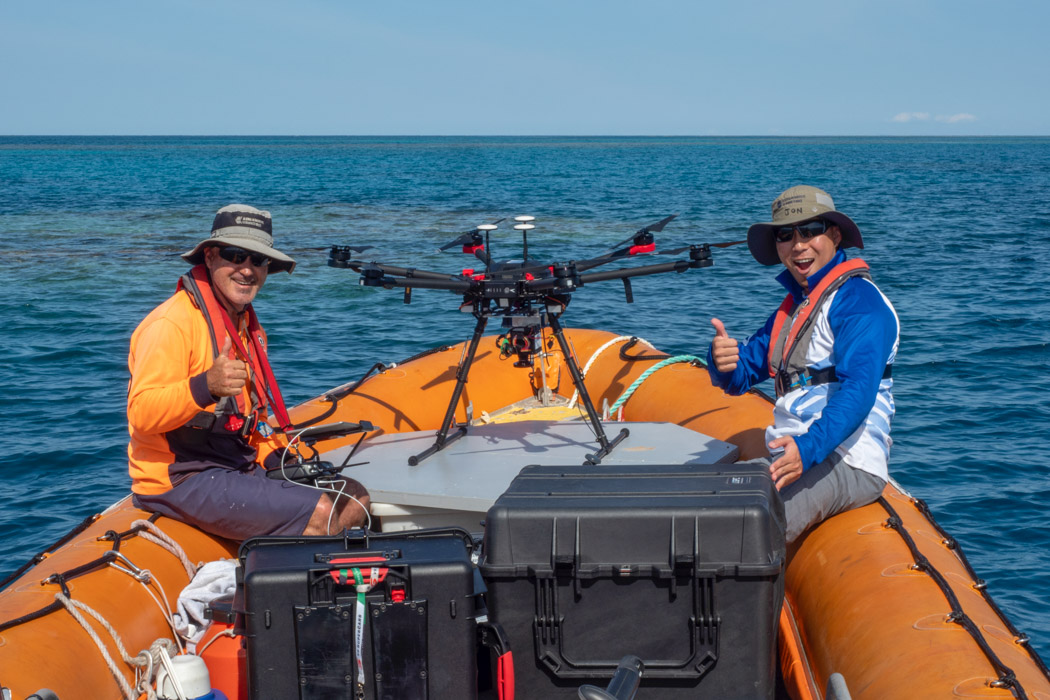Researchers from the Australian Institute of Marine Science have broken new ground while trialling aerial and underwater robots at sea, which would allow greater monitoring of the Great Barrier Reef.
The Australian Institute of Marine Science’ technology development and engineering team have spent two weeks at sea trialling a seafaring robot which can lock-on to an underwater flight path via semi-autonomous navigation.
The modified Blue ROV2 (Remotely Operated Vehicle) has the potential to lock-on and follow a transect line across a reef, which is usually done by a team of divers, to monitor the health of a reef.
AIMS Technology Transformation leader Melanie Olsen said her team put a hyperspectral camera onto a Blue ROV2 with a dive capability of 100m.
The hyperspectral camera captures more than 270 bands of colour information too complex to visualise by the naked eye and gives us the capability to survey the reef at richer multifaceted levels including mapping of the ocean floor, depth of the water, identifying bleached corals, and more.
“This is the first time a hyperspectral camera has been trialled underwater on our ROVs,” Ms Olsen said.
“We did some revolutionary stuff during this trial, we also flew the 900g hyperspectral camera under our large aerial drone off our research vessel (RV) Cape Ferguson, over a coral transect on John Brewer Reef, which is one of our long term monitoring sites.
“This is also the first time we have flown ROVs and drones simultaneously during night-time missions.
“We want to remain globally competitive and so we are boosting our technological capabilities. Robotics helps us to monitor larger and new sections of the reef in areas that would otherwise be dangerous to divers.”
“These robots will soon be helping to free up our marine science researchers to do the important work of looking at how to help support these reefs.
“It will allow for the acceleration of data collection and processing. This two-week trial showed we can perform missions at night, and we can go deeper.
“We can monitor aspects of coral reefs we have not been able to before.”
Ms Olsen said these robots meant the reef could also be monitored when it is unsafe to put a diver in the water because of crocodiles, marine stingers or sharks.
AIMS is working in partnership with the Queensland University of Technology to leverage Australian expertise in shallow water marine robotics.
Media enquiries:
Media officer Emma Chadwick
M: 0412 181 919
e.chadwick@aims.gov.au



